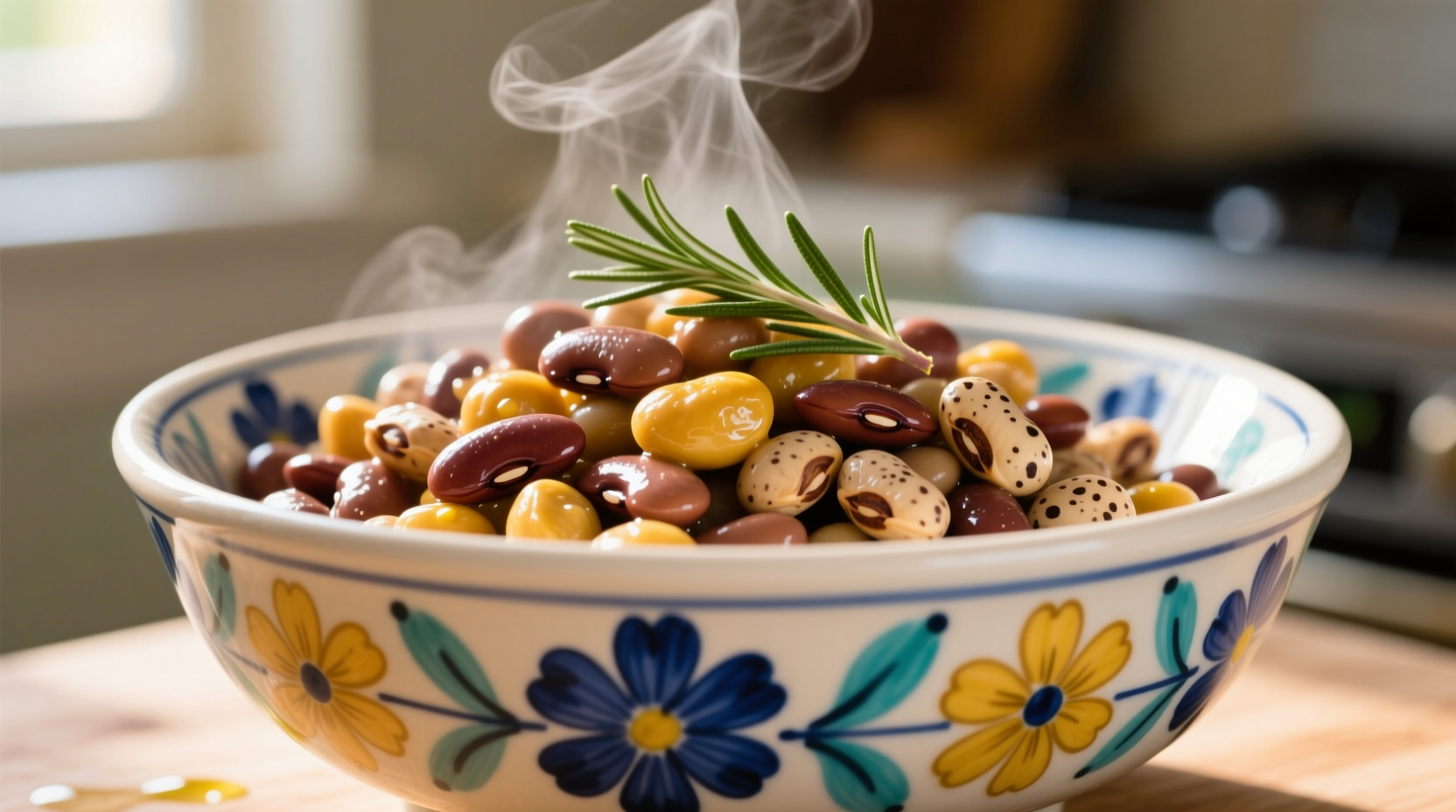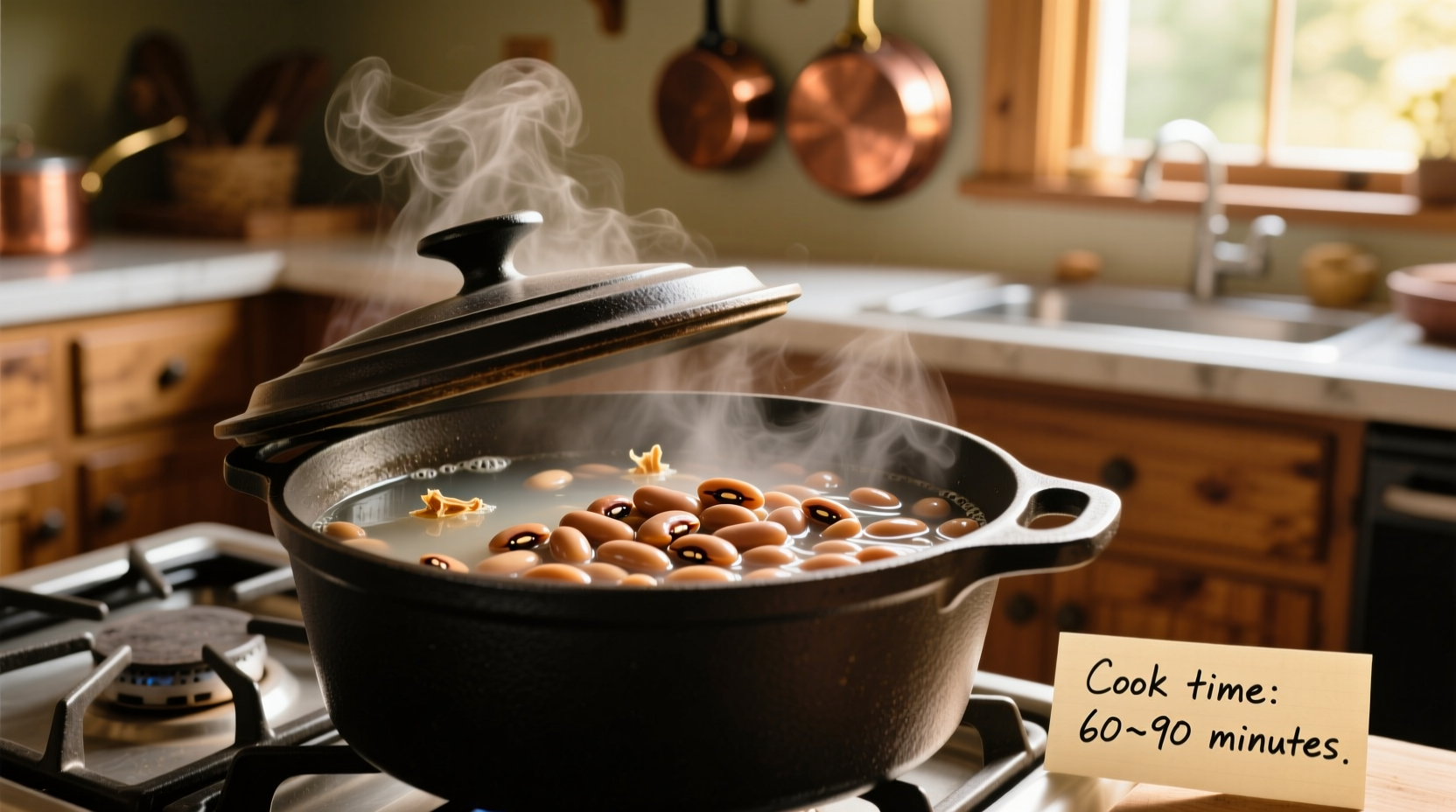Nothing ruins a comforting pot of beans faster than undercooked or unevenly cooked legumes. As someone who's tested hundreds of bean recipes across professional kitchens and home stovetops, I've discovered that understanding the variables affecting cooking time is just as important as the clock itself. In this comprehensive guide, you'll learn exactly how long different beans need to cook using various methods, plus the science-backed techniques that guarantee consistent results.
Bean Varieties and Their Cooking Times
Not all beans are created equal when it comes to cooking duration. The size, density, and age of beans dramatically impact how long they need to simmer. Here's a reference table of common varieties with their typical stovetop cooking times after an 8-hour soak:
| Bean Type | Soaked Cooking Time | Unsoaked Cooking Time | Pressure Cooker Time |
|---|---|---|---|
| Black Beans | 45-60 minutes | 60-90 minutes | 20-25 minutes |
| Kidney Beans | 50-75 minutes | 75-90 minutes | 25-30 minutes |
| Pinto Beans | 45-60 minutes | 60-80 minutes | 20-25 minutes |
| Chickpeas | 60-90 minutes | 90-120 minutes | 30-40 minutes |
| Lentils | 20-30 minutes | 25-35 minutes | 8-12 minutes |
Source: USDA Food and Nutrition Service
Pressure Cooking vs. Traditional Methods
Modern pressure cookers dramatically reduce bean cooking time while maintaining texture. The high pressure forces water into the bean structure more effectively than traditional simmering. For most beans, you'll save 60-70% of cooking time compared to stovetop methods. However, certain delicate beans like lentils require careful timing to prevent mushiness.
When using an Instant Pot or similar electric pressure cooker, follow these guidelines:
- Always use the natural release method for beans (15-20 minutes)
- Never fill the cooker more than halfway with beans and liquid
- Add 1 teaspoon of oil to prevent foaming and clogging
- For unsoaked beans, increase cooking time by 5-10 minutes

Soaking: The Time-Saving Secret
Soaking beans isn't just traditional—it's scientifically proven to reduce cooking time and improve digestibility. According to research from the USDA National Agricultural Library, properly soaked beans cook 20-30% faster than unsoaked beans. The hot soak method (boiling for 2-3 minutes then steeping covered for 1-4 hours) works particularly well for older beans.
Here's what most home cooks don't know: the soaking water contains oligosaccharides that cause gas. For maximum digestibility, discard the soaking water and cook beans in fresh water. Contrary to popular belief, adding salt to the soaking water won't prevent beans from softening—as confirmed by culinary scientists at America's Test Kitchen.
Why Your Beans Might Not Be Cooking Properly
If your beans remain hard despite extended cooking, consider these common culprits:
- Old beans: Beans lose moisture over time. After 1-2 years in storage, they may never soften properly
- Hard water: Minerals in hard water interfere with the softening process. Try using filtered water
- Acidic ingredients: Tomatoes, vinegar, or wine added too early prevent beans from softening
- Altitude: Above 3,000 feet, increase cooking time by 25% due to lower boiling points
Professional chefs use a simple test for doneness: squeeze a bean between your thumb and forefinger. It should yield easily without resistance but maintain its shape. Overcooked beans become mushy and lose nutritional value, while undercooked beans contain lectins that can cause digestive issues.
Safety First: Why Proper Cooking Matters
Undercooked kidney beans contain phytohaemagglutinin, a toxin that can cause severe food poisoning. The FDA recommends boiling kidney beans for at least 10 minutes before reducing to a simmer to destroy this compound. Never use a slow cooker for kidney beans without pre-boiling, as the lower temperatures may actually increase toxin concentration.
Pro Tips for Perfect Beans Every Time
After testing hundreds of bean recipes, I've found these techniques consistently deliver the best results:
- Add a strip of kombu seaweed during cooking—it contains enzymes that break down gas-producing compounds
- Season beans with salt only after they're partially cooked for better texture
- Cool beans in their cooking liquid to maximize flavor absorption
- Freeze cooked beans in portion-sized containers with their liquid for quick future use
Remember that cooking times are starting points—your specific beans, water chemistry, and equipment will affect results. Always test for doneness rather than relying solely on the clock. With these guidelines, you'll transform from bean-cooking novice to confident chef who consistently produces perfectly tender legumes.











 浙公网安备
33010002000092号
浙公网安备
33010002000092号 浙B2-20120091-4
浙B2-20120091-4